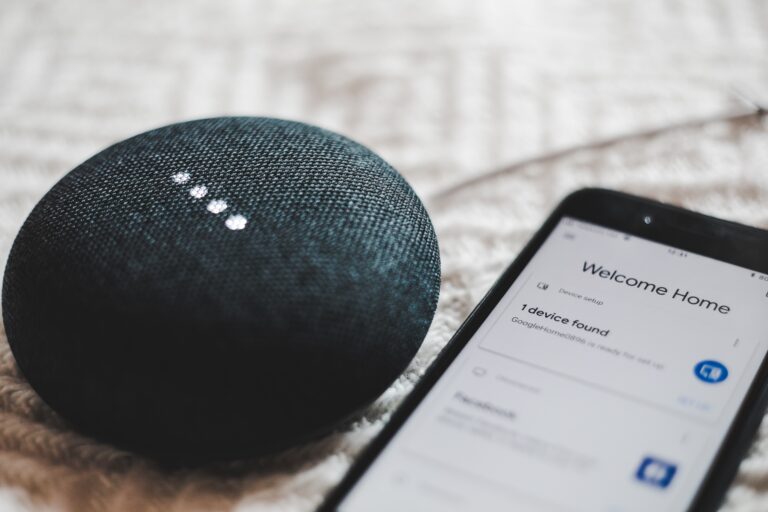The rise of voice search is undeniable. With the growing popularity of smart speakers and voice-enabled devices, it has become increasingly important for businesses to optimise their marketing strategies for voice assistants.
In this blog, we will explore the current usage stats of voice search across different devices, growth projections and considerations businesses should have. Additionally, we will provide a detailed section for marketing teams on how to optimise their marketing strategies for voice assistants.
If you are a marketing candidate looking for a new role, upload your CV with us today. If you are an employer looking to make an addition to your marketing team, look at our specialist marketing recruitment services and contact us today.
Voice search usage
Voice search has come a long way since it was first introduced in 2011 by Google. Today, it has become a mainstream technology, with more and more people using voice-enabled devices to search for information, products, and services. According to a recent study by Alpine.AI, there are currently over 4 billion active voice assistants in use worldwide, and this number is expected to grow to 8 billion this year (2023).
Smart speakers are the most popular type of device used for voice search, with Amazon’s Alexa and Google Assistant leading the way. In the US alone, there are over 150 million smart speakers in use, and this number is expected to grow to 500 million by 2023. In addition to smart speakers, voice search is also commonly used on smartphones and other devices, such as smartwatches and home automation systems.
The number of active voice assistants is expected to reach 8 billion by 2023. This growth is driven by several factors, including the increasing popularity of smart speakers, the integration of voice assistants into more devices, and the growing comfort level of consumers with using this type of search.
Voice search revenue growth
Voice search is also becoming a key revenue driver for businesses. According to a study by OC&C Strategy Consultants, voice shopping grew from $2 billion in 2018 to $40 billion in 2022 in the US alone. Smart speakers are expected to be the largest driver of this growth, with voice shopping through smart speakers growing from $2 billion in 2018 to $30 billion in 2022.
Voice search business considerations
Businesses need to consider how they can optimise their marketing strategies for voice assistants. Here are some considerations businesses should have:
- Understand how consumers use voice search: Businesses should understand how people use this technology to find information, products, and services. This includes understanding the types of questions people ask and the language they use.
- Optimise for featured snippets: Voice assistants often provide answers from featured snippets. Businesses should optimise their content to appear in featured snippets by providing clear and concise answers to common questions.
- Local SEO: Voice search is often used to find local businesses and services. Businesses should optimise their local SEO to appear in local search results.
- Structured Data: Structured data helps search engines understand the content of a website better. Businesses should use structured data to help search engines provide accurate and relevant answers to voice queries.
- User Experience: Voice search is often used for quick answers. Businesses should ensure that their website and content are mobile-friendly and provide a good user experience.
- Voice-activated advertising: Businesses should consider using voice-activated advertising to promote their products and services. This includes creating ads specifically for voice assistants.
- Personalisation: Voice assistants can provide personalised experiences based on user preferences and history. Businesses should consider how they can personalise their marketing strategies for voice assistants.
- Branding: Often the brand is often mentioned along with the answer to the voice query. Businesses should ensure that their brand is well represented in their marketing strategy.
Pros and cons of voice search
There are several pros and cons of voice search for both businesses and consumers. Let’s take a look at some of them:
Pros
For businesses:
- Can drive revenue by providing a new channel for customers to discover and purchase products and services.
- Can increase brand awareness by providing more opportunities for businesses to be mentioned in search results.
- Can provide a more personalised experience for customers, leading to increased customer loyalty.
For consumers:
- Voice search is hands-free and convenient, allowing for quick and easy access to information.
- Can provide a more conversational and natural experience for users.
- Van be more accessible for people with disabilities.
Cons
For businesses:
- Requires significant investment in technology and resources to optimise for.
- Can provide less data and analytics than traditional search, making it more difficult to measure the success of marketing strategies.
For consumers:
- Can be less accurate than traditional search.
- Can raise data privacy concerns for consumers.
- Voice search can be more difficult to use in noisy environments.
Voice search data concerns
With the growing use of this type of search, data privacy concerns are becoming increasingly important. When using voice search, users are often sharing personal information with the voice assistant. Here are some data concerns for consumers to consider:
- Voice assistants are always listening and recording, even when not activated. Consumers should consider the privacy implications of having a device that is always listening in their home.
- Voice assistants are storing personal data in the cloud. Consumers should consider who has access to this data and how it is being used.
- Voice assistants can be hacked, leading to the potential for personal data to be stolen. Consumers should ensure that their devices are secure and updated with the latest security patches.
Common usages of voice search devices
Voice search devices are used for a variety of purposes, including:
- Searching for information: Users can ask voice assistants to provide information on a variety of topics.
- Controlling smart home devices: Voice assistants can be used to control smart home devices, such as lights, thermostats, and security systems.
- Making phone calls: Users can make phone calls through their voice assistants.
- Playing music and other media: Users can use voice assistants to play music and other media.
- Setting reminders and alarms: Users can use voice assistants to set reminders and alarms.
Future usages of voice search devices
As this technology continues to evolve, we can expect to see new and innovative uses for voice assistants. Some possible future usages include:
- Healthcare: used to provide healthcare services, such as scheduling appointments, providing medication reminders, and answering health-related questions.
- Education: used to provide educational services, such as language learning and homework help.
- Retail: used to provide personalised shopping experiences, such as recommending products based on a user’s preferences.
- Travel: used to provide travel-related services, such as booking flights and hotels.
Optimising your marketing strategy for voice search
Now that we have explored the current usage stats, growth projections, and considerations businesses should have, let’s take a closer look at how to optimise your marketing strategy for voice assistants.
Here are 10 things you should do to make sure your marketing strategy is optimised for voice search:
- Research your target audience’s voice search behaviours: To optimise your marketing strategy for voice search, you need to understand how your target audience uses voice search. Conduct research to identify the types of queries they ask and the language they use. Use this information to create content that answers their questions in a natural, conversational tone.
- Create content that answers common questions: Voice search users often ask questions, so it’s important to create content that answers common questions related to your industry, products, and services. Use structured data to help search engines understand your content better and improve your chances of appearing in featured snippets.
- Optimise your website for local SEO: Voice search is often used to find local businesses and services. Optimise your website for local SEO by including your location in your content, using structured data to mark up your address and other information, and claiming and verifying your business on Google My Business.
- Optimise your website for mobile devices: Voice search is often used on mobile devices, so it’s important to ensure that your website is optimised for mobile devices. This includes using a responsive design, optimising your images and videos, and ensuring that your site loads quickly on mobile devices.
- Use natural language in your content: Voice search queries are often conversational, so it’s important to use natural language in your content. Write in a way that sounds like you’re talking to someone, rather than writing for a search engine.
- Create a voice-activated advertising strategy: Consider creating ads specifically for voice assistants. Use natural language and conversational tones to create ads that sound like they’re part of a conversation.
- Build a voice-activated chatbot: Consider building a voice-activated chatbot to provide customer service and answer common questions. This can help reduce customer service costs and provide a more personalised experience for your customers.
- Monitor your analytics: Monitor your analytics to see how voice search is impacting your marketing strategy. Use this data to adjust your strategy as needed and identify areas for improvement.
- Use conversational language in your PPC ads: If you’re running PPC ads, use conversational language to create ads that sound like they’re part of a conversation. This can improve your click-through rates and improve the effectiveness of your ads.
- Test and iterate your strategy: Voice search is still a relatively new technology, so it’s important to test and iterate your strategy. Use A/B testing to identify what works and what doesn’t, and use this information to refine your strategy over time.
Conclusion
Voice search is rapidly becoming a mainstream technology, with more and more people using voice-enabled devices to search for information, products, and services. Optimising your marketing strategy for voice assistants can help you stay ahead of the competition and drive revenue for your business. By understanding how people use voice search, creating content that answers common questions, optimising your website for local SEO and mobile devices, using natural language, and monitoring your analytics, you can create a successful marketing strategy for voice assistants.
Discover more digital marketing trends for 2023 and 2024.




